SPRINGER BRIEFS IN
ELECTRICAL AND COMPUTER ENGINEERING
Hongliang�Zhang
Lingyang�Song
Zhu�Han
Yingjun�Zhang
Hypergraph
Theory in
Wireless
Communication
Networks
123
�
SpringerBriefs in Electrical and Computer
Engineering
�
More information about this series at http://www.springer.com/series/10059
�
Hongliang Zhang • Lingyang Song Zhu Han
Yingjun Zhang
Hypergraph Theory in
Wireless Communication
Networks
123
�
Hongliang Zhang
Peking University
Beijing, China
Zhu Han
University of Houston
Houston, TX, USA
Lingyang Song
Peking University
Beijing, China
Yingjun Zhang
The Chinese University of Hong Kong
Hong Kong, Hong Kong
ISSN 2191-8112
SpringerBriefs in Electrical and Computer Engineering
ISBN 978-3-319-60467-1
DOI 10.1007/978-3-319-60469-5
ISSN 2191-8120 (electronic)
ISBN 978-3-319-60469-5 (eBook)
Library of Congress Control Number: 2017945358
© The Author(s) 2018
This work is subject to copyright. All rights are reserved by the Publisher, whether the whole or part of
the material is concerned, specifically the rights of translation, reprinting, reuse of illustrations, recitation,
broadcasting, reproduction on microfilms or in any other physical way, and transmission or information
storage and retrieval, electronic adaptation, computer software, or by similar or dissimilar methodology
now known or hereafter developed.
The use of general descriptive names, registered names, trademarks, service marks, etc. in this publication
does not imply, even in the absence of a specific statement, that such names are exempt from the relevant
protective laws and regulations and therefore free for general use.
The publisher, the authors and the editors are safe to assume that the advice and information in this book
are believed to be true and accurate at the date of publication. Neither the publisher nor the authors or
the editors give a warranty, express or implied, with respect to the material contained herein or for any
errors or omissions that may have been made. The publisher remains neutral with regard to jurisdictional
claims in published maps and institutional affiliations.
Printed on acid-free paper
This Springer imprint is published by Springer Nature
The registered company is Springer International Publishing AG
The registered company address is: Gewerbestrasse 11, 6330 Cham, Switzerland
�
Preface
With the explosive traffic demand and dense mobile devices, a new generation
of cellular networks is required to support resource sharing among multiple
mobile devices and manage their collisions properly. In this book, we focus on
communication systems in which network devices are allowed to reuse the same
resource so as to improve the overall performance. For example, mobile users with
sparse code multiple access (SCMA) share the same codebook, or ultra-dense small
cells with massive multiple-input-multiple-output (MIMO) share the same limited
pilot sequences.
Conventionally, considering the topology of network devices, graph theory is
a useful tool to seek the solutions of the resource sharing problem. In the graph
representation of cellular network, each vertex represents a network device, and an
edge exists between two vertices if they collide when sharing the same resource.
Therefore, the resource allocation problem corresponds to finding the independent
set in which the devices do not collide. By modeling the pairwise relations, the
overall system performance increases.
However, in many scenarios of future wireless systems, the network needs
to coordinate multiple devices in order to further improve the utilization of the
scarce spectrum resources, and thus, the graph model is not accurate in modeling
the relation among multiple devices. For example, in the subchannel allocation
problem in non-orthogonal multiple access (NOMA), the mobile users share the
same subchannel with multiple mobile users, and thus, these mobile users will
bring cumulative interference, which cannot be captured by traditional graph. In this
book, we introduce a mathematical framework from hypergraph theory, in which a
hyperedge can be a subset of the vertex set. It provides a useful analytical tool for the
readers to analyze how the relations among multiple mobile users affect the system
performance, and thus, can be applied to address the resource sharing scenarios in
future wireless networks.
First, in Chap. 1, we introduce the basic preliminaries of hypergraph theory
in general and develop two hypergraph-based polynomial algorithms, i.e., hyper-
graph coloring and hypergraph clustering. Then, in Chaps. 2 and 3, we present
two emerging applications of hypergraph coloring and hypergraph clustering in
v
�
vi
Preface
Device-to-Device (D2D) underlay communication networks, respectively, in order
to show the advantages of hypergraph theory compared with the traditional graph
theory. Finally, in Chap. 4, we discuss the limitations of using hypergraph theory in
future wireless networks and briefly present some other potential applications.
Beijing, China
Beijing, China
Houston, TX, USA
Hong Kong, Hong Kong
Hongliang Zhang
Lingyang Song
Zhu Han
Yingjun Zhang
�
Contents
1 Basics of Hypergraph Theory ...............................................
1.1 Basic Hypergraph Concepts .............................................
1.1.1 Preliminary Definitions ..........................................
1.1.2
Incidence and Duality ...........................................
1.1.3 Basic Hypergraph Operations ...................................
1.1.4 Subhypergraphs ..................................................
1
1
1
3
5
8
1.2 Hypergraph Coloring .................................................... 11
1.2.1 Basic Kinds of Hypergraph Coloring ........................... 11
1.2.2 Greedy Algorithm for Hypergraph Coloring ................... 13
1.3 Hypergraph Clustering ................................................... 14
1.3.1 Hypergraph Clustering Problem ................................ 15
1.3.2 Clustering Algorithm ............................................ 16
References ...................................................................... 19
2 Radio Resource Allocation for Device-to-Device Underlay
Communications .............................................................. 21
2.1 Introduction .............................................................. 21
2.2 System Model and Problem Formulation ............................... 22
2.2.1 System Model .................................................... 22
2.2.2 Problem Formulation ............................................ 24
2.3 Traditional Graph Based Channel Allocation........................... 25
2.3.1 Graph Construction .............................................. 25
2.3.2 Channel Allocation Algorithm .................................. 26
2.4 Hypergraph Based Channel Allocation ................................. 26
2.4.1 Hypergraph Construction........................................ 27
2.4.2 Hypergraph Coloring Algorithm ................................ 29
2.5 Property Analysis ........................................................ 31
2.6 Simulation Results ....................................................... 33
2.7 Summary ................................................................. 37
References ...................................................................... 38
vii
�

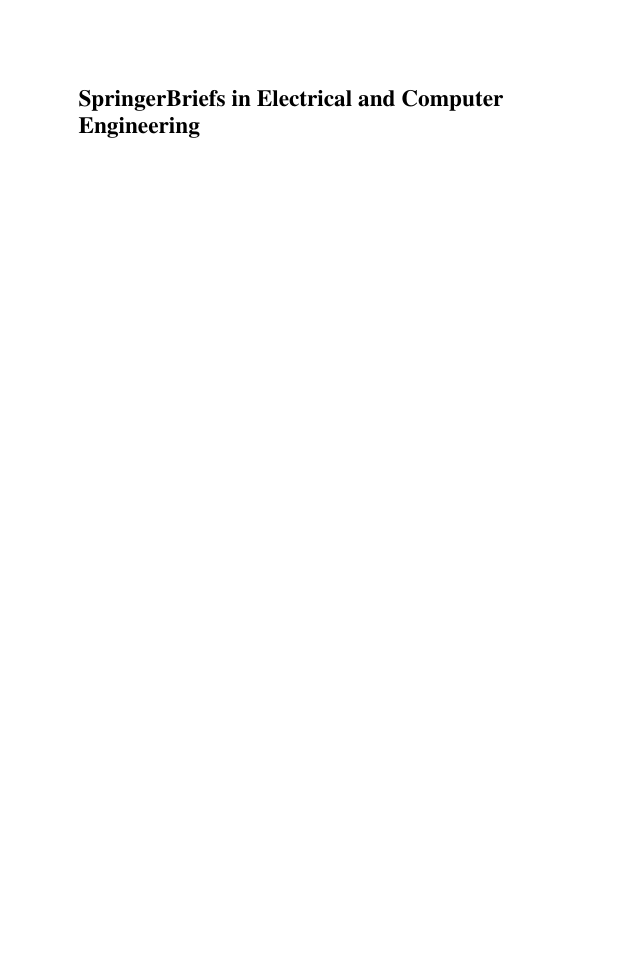

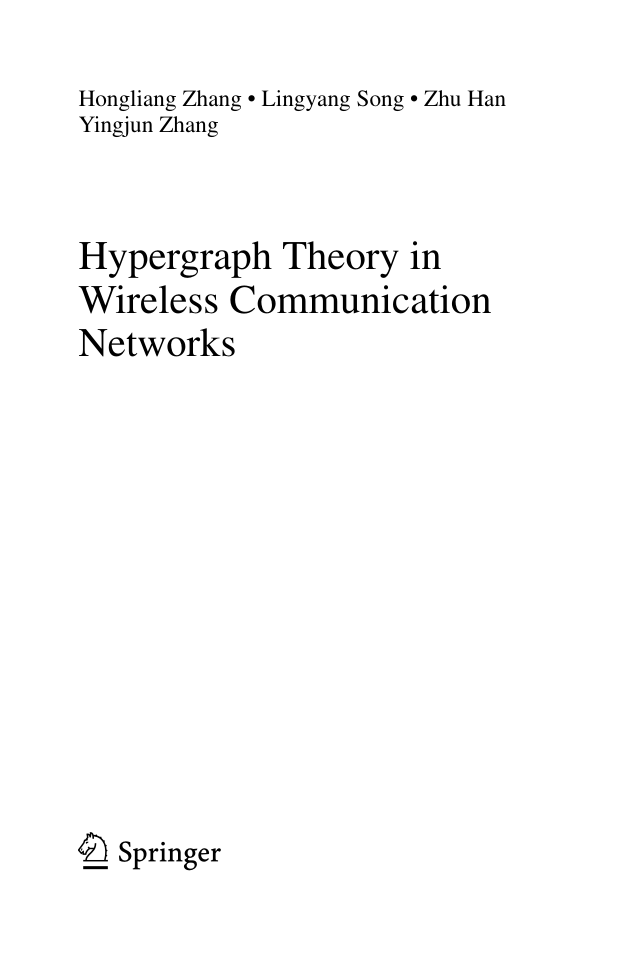
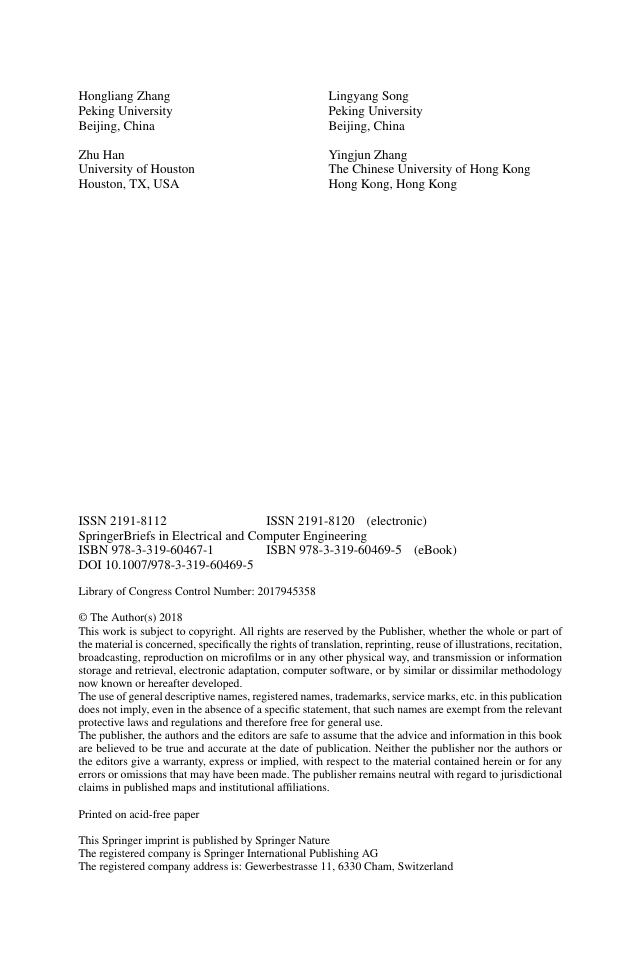
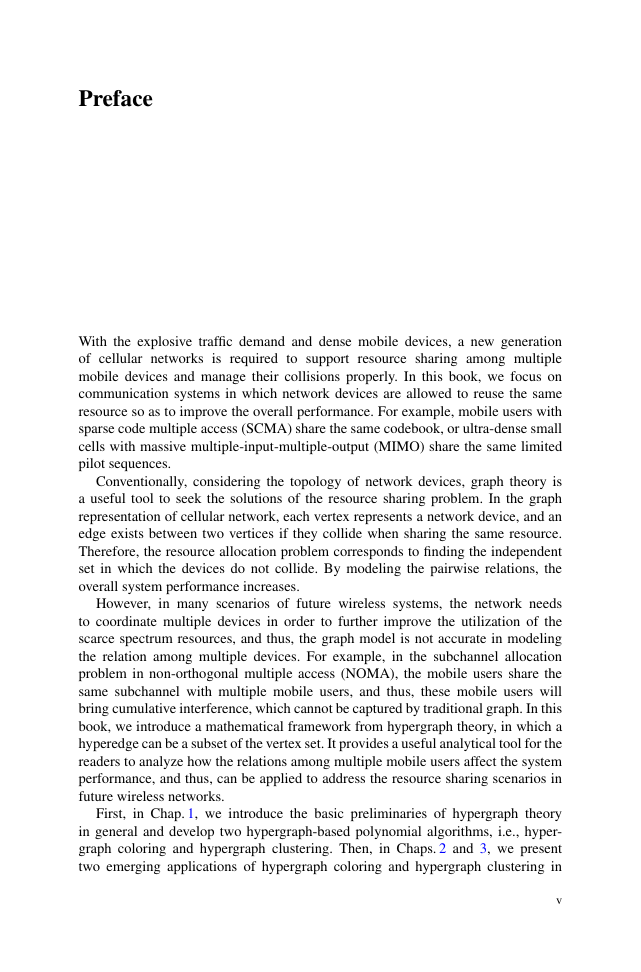

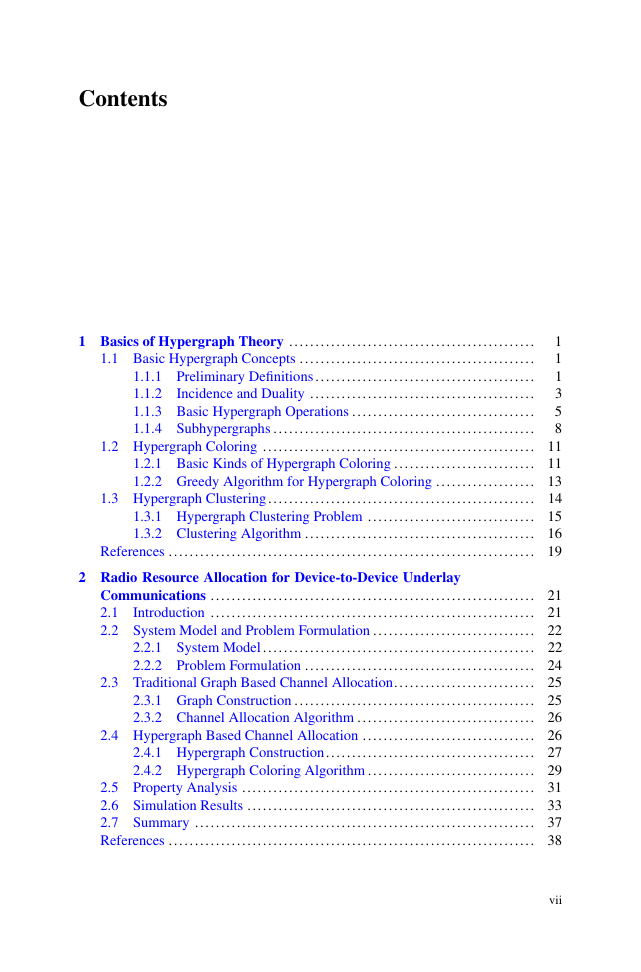








 2023年江西萍乡中考道德与法治真题及答案.doc
2023年江西萍乡中考道德与法治真题及答案.doc 2012年重庆南川中考生物真题及答案.doc
2012年重庆南川中考生物真题及答案.doc 2013年江西师范大学地理学综合及文艺理论基础考研真题.doc
2013年江西师范大学地理学综合及文艺理论基础考研真题.doc 2020年四川甘孜小升初语文真题及答案I卷.doc
2020年四川甘孜小升初语文真题及答案I卷.doc 2020年注册岩土工程师专业基础考试真题及答案.doc
2020年注册岩土工程师专业基础考试真题及答案.doc 2023-2024学年福建省厦门市九年级上学期数学月考试题及答案.doc
2023-2024学年福建省厦门市九年级上学期数学月考试题及答案.doc 2021-2022学年辽宁省沈阳市大东区九年级上学期语文期末试题及答案.doc
2021-2022学年辽宁省沈阳市大东区九年级上学期语文期末试题及答案.doc 2022-2023学年北京东城区初三第一学期物理期末试卷及答案.doc
2022-2023学年北京东城区初三第一学期物理期末试卷及答案.doc 2018上半年江西教师资格初中地理学科知识与教学能力真题及答案.doc
2018上半年江西教师资格初中地理学科知识与教学能力真题及答案.doc 2012年河北国家公务员申论考试真题及答案-省级.doc
2012年河北国家公务员申论考试真题及答案-省级.doc 2020-2021学年江苏省扬州市江都区邵樊片九年级上学期数学第一次质量检测试题及答案.doc
2020-2021学年江苏省扬州市江都区邵樊片九年级上学期数学第一次质量检测试题及答案.doc 2022下半年黑龙江教师资格证中学综合素质真题及答案.doc
2022下半年黑龙江教师资格证中学综合素质真题及答案.doc